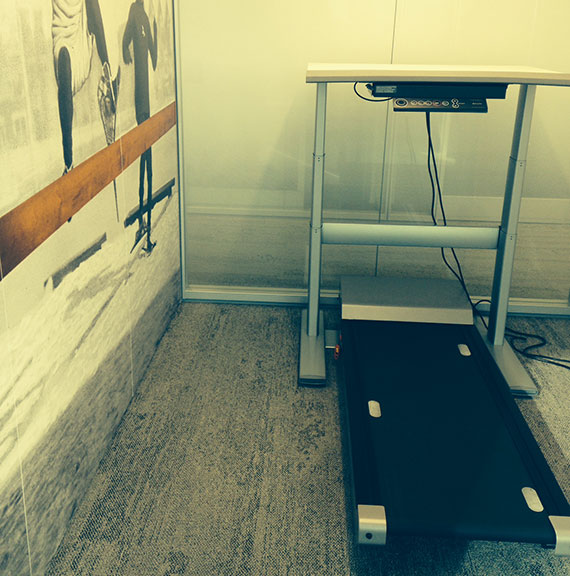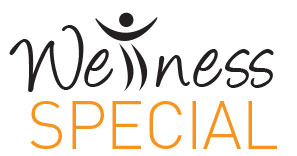It might be the latest buzzword but do we really understand what wellness actually means? Samantha McClary investigates
Now that sitting at your desk all day has been labelled just as dangerous as smoking, it is no surprise that many employees and employers are looking for ways to make their workplace more healthy.
But what exactly is a healthy building and why have wellbeing and wellness in the workplace become the latest buzzwords in real estate?
The dictionary definition of wellbeing is “the state of being comfortable, healthy or happy”. The definition of wellness is much the same, but puts an emphasis on the individual actively pursuing the state of being in good health.
It sounds simple enough, unless, of course, you are one of the billions of people globally who have a traditional office job. Then it might not be so simple. Or not yet, if you believe the hype.
Wellbeing and wellness have risen up the agenda for the built environment sector in recent years, and so they should – buildings are fundamentally designed for people, after all. Buildings, whether home, office or shop, should enhance our quality of life. In a work setting, enhanced quality of life means higher productivity, the evidence for which is too long to list here.
There is no denying that employees (and therefore tenants) are demanding significant improvements to the human sustainability of commercial buildings. It is no longer enough for the modern office to just be green. It must also benefit the health and productivity of those who work within its walls.
The easiest, least costly and probably most efficient way to do that is to promote and drive regular physical movement.
According to the World Health Organisation, sedentary behaviour is one of the biggest drivers of global ill health and is responsible for as many deaths as smoking. Prolonged sitting, says Public Health England, is associated with a host of long-term conditions, including obesity, diabetes, heart disease and several cancers, and can affect workers’ mental health, productivity and overall sense of wellbeing.
Nationally, we are estimated to spend almost nine hours a day sitting, with 70% of this at work. Within working hours, we spend more than three-quarters of that time sat down. Of the time we are on our feet, just 4% is classed as moderate physical activity.
Scientific evidence suggests that we may not even be able to offset the effects of sitting at our desks all day by vigorous exercise outside work hours.
Movement is key
If movement is key to wellbeing, then the office environment has an essential role to play. For the most extreme companies, this can mean ping-pong tables, slides, indoor running tracks, climbing walls, treadmill desks.
But for companies without Google’s budget, there are much simpler and, arguably, more effective ways to create movement and contribute to employee wellness.
Paul Nuki, founder of StepJockey, unsurprisingly advocates the use of stairs to help promote wellness. StepJockey is a system that gamifies the use of stairs, prompting building occupants to take part in challenges, such as climbing the equivalent height of Everest or all the world’s tallest towers.
“By promoting stair use, facilities managers can cut their carbon footprint at the same time as boosting tenants’ health,” says Nuki. “It is a win-win and one that can be implemented with minimal capital investment.”
He says that because of fire regulations, virtually all buildings have one or more fully maintained staircases that are capable of serving the entire population of the property. The trick is getting people to quit the lift in favour of the stairs.

Encouraging staff to stand more should also be a relatively simple and cost-effective way to promote wellness. While in Scandinavia a whopping 90% of workers have a standing workstation, and in Denmark it is mandatory for employers to offer staff sit-stand desks, in the UK just 1% of the population have access to sit-stand desks.
But campaigns have begun to try to boost this figure. The British Heart Foundation last year launched On Your Feet Britain, an event encouraging businesses to get their staff to stand more. It is part of the Get Britain Standing campaign and more than 2,000 companies have signed up.
Access to fresh air, daylight and other natural elements, temperature and noise control, open and quiet spaces can also help to improve wellness (see right). Almost all UK office workers view natural light and access to outdoor spaces – 98% and 96%, respectively – as key factors to their wellbeing, according to the British Council for Offices. More than 25% complain about the acoustics in their office, with 75% blaming a noisy open-plan environment.
Basic needs
So while it is admirable when employers provide gyms, cafés and yoga on site, the benefits are meaningless if the basic needs of an employee are ignored. And employees’ needs differ widely across locations, demographics, industries and socio-economic environments. In as little as four years’ time, offices could have staff working side by side ranging in age from their teens to 70-plus. Building design can’t fix everything for everyone.
Ophelia Yeung and Katherine Johnston, authors of the Global Wellness Institute’s Future of Wellness at Work report, say: “In some developing countries, the most pressing health priority for workers could be clean air or safe drinking water in their communities, and perhaps not massage tables or Fitbits. It could be transportation and safety for female staff working night shifts or it could be earning a living wage or improving work-life balance.”
A Global Wellness Institute survey of US workers earlier this year found three-quarters had become disillusioned with workplace wellness programmes, believing most were put in place to benefit the employer rather than the employee. For example, that sleeping pods and meditation rooms were not really for the good of the employee, but were there to subconsciously encourage staff to work harder and longer.
And as we move from knowledge economies (where companies use our brains rather than the hands used in the industrial economies) to human economies (where our hearts will become increasingly important as more intelligent machines take over the intellectual stuff), the perception of what creates wellness will change.
This is already happening, according to the Global Wellness Institute. Its study found that for millennials, what constitutes wellness in the workplace is more intangible than the generations before them. They want to know their employer cares. A slide instead of a lift or stairs might be fun, but does it really benefit an employee and help them to achieve a state of comfort, health and happiness?
More about culture
Wellness, it seems, is more about culture than office design. The BCO’s report, Wellness at Work, says most UK employees think the design of their office already supports their wellbeing, but more than half complain that their corporate culture does not.
Personal relationships remain the cornerstone of wellbeing at work. Nine out of 10 workers say their wellbeing is improved by support from colleagues, while four in five say the people they work with contribute to their wellbeing.
“Workplace intangibles,” say Yeung and Johnston, “whether it is honest communication, creating a vibe of caring and teamwork, or ensuring workers are intellectually stimulated or free from harassment, are important components in driving perceptions of on-the-job wellness. Companies that seize the most important intangibles will increase profitability through greater productivity, employee motivation and less turnover.”
And that is why wellness is becoming increasingly important. As the human economy grows, more and more people will be led by their hearts and driven by their values. To attract and retain the true talent of the future – which cannot be mimicked by technology – attention must be paid to what individuals really want. Flash, gimmicky offices may be an attention-grabber, but it will be the attention to needs that really scores high on the wellness agenda.
Basic principles of wellness at work
Whizz-bang office design can tick some boxes for wellness, but the real improvements come from controlling some much more basic elements.
Indoor air quality
Better air quality can improve productivity by 8-11%, according to a host of scientific research.
Thermal comfort
How comfortable people feel in terms of temperature has a significant impact on workplace satisfaction. Studies consistently show that even modest degrees of personal control over thermal comfort can improve productivity.

Daylight/lighting Seasonal affective disorder is a classified illness. Believed to be caused by a lack of sunlight, SAD has an impact on hormone levels and leads to depression. The right light, ideally natural light, can have a profound impact on wellness and wellbeing. Numerous studies have shown that proximity to windows increases productivity, with the views out of the windows being particularly important. Any view that offers a connection to nature (think green spaces in urban planning) has a positive correlation to productivity
and wellness.
Biophilia Biophilia is the hypothesis that humans have an instinctive bond to nature. There is growing understanding of biophilic design and the positive impact that green space and nature can have on mental health. Think office plants, green walls, and beehives on roofs.
Noise The number one complaint in modern offices is noise, with open-plan offices the main culprit. At this year’s BCO conference, founder of The Sound Agency, Julian Treasure, said productivity could drop by two-thirds in open-plan offices because of noise. Noise-reducing materials, quiet spaces and floor layout should all be considered in office design.
Active design and exercise Movement is key to wellness, so an office space that encourages it is vital. Promoting stair use, having safe and secure cycle parking facilities, showers and access to, and corporate discounts for, gyms can all boost wellness, reduce sick days and so increase productivity.
Amenities and location Increasingly, workplace wellness is not just to do with what goes on inside an office, but where the office is. Availability of amenities and services is now recognised as an important factor for occupiers. Think childcare, cycle routes, parks, healthy eating establishments and green space.
Top five innovations in wellness
While the simple stuff may have more longevity than slides and rooftop running tracks, there is always fun to be had with the latest innovations in wellness. So if you want to be on-trend with wellness in 2016, read on.
1. Sound baths Although not new, sound baths are experiencing a boom in popularity. All you need is a quiet, dark room and someone who is handy with gongs and crystals. Participants either lie down or sit, and listen to (mostly) live healing music to promote relaxation, expand consciousness and open the body’s energetic system.
2. Sensory deprivation tanks Most of us feel anxiety when we’re not connected, but perhaps that is because we are connected all the time – unless you submerge yourself in a sensory deprivation tank. The water tank, filled with more than 1,000lbs of Epsom salts, is soundless, free of gravity and entirely dark. It is used to treat chronic pain and illness, high blood pressure, fatigue and stress, and to promote creative thought.

3. Nitro coffee Bulletproof coffee is so last year. If you really want staff to be firing on all cylinders, get yourself a nitro coffee pump. Nitrogen-infused coffee is cold, frothy, creamy and on tap – it looks like Guinness – and is said to help blood flow.
4. Melomind headphones Electroencephalographic technology-based cans generate a soundscape that responds to your brainwaves in real time and can train your brain to cope with stress. Regulating the music by relaxing activates the brain’s neuroplasticity, enabling it to learn to de-stress.
5. Portable scent speakers Cyrano, invented by Harvard professor David Edwards, is a compact device with 12 scents, developed to evoke particular moods, such as Get Energised, Get Relaxed and Get Away. Users can create scent playlists.
To send feedback, email samantha.mcclary@estatesgazette.com or tweet @samanthamcclary or @estatesgazette

- Features editor’s comment: what is wellness?
- Briefing: Swapping the lift for the stairs
- All well and good: making the workplace more healthy
- Workplace wellness: the main players
- Healthy profit: the value of wellbeing in the office
- Buildings on the cutting edge
RELATED LINKS:
- Roundtable: building connectivity
- Shard leasing director James Goldsmith is leaving to take on the same role at 22 Bishopsgate, EC2
- City protects Pinnacle site from rights to light claims
- Boris approves 22 Bishopsgate
- Sir Stuart Lipton talks to Damian Wild about the new thinking behind 22 Bishopsgate, government failures, and a rethink on Silvertown Quays
- Lipton’s City comeback puts people first











